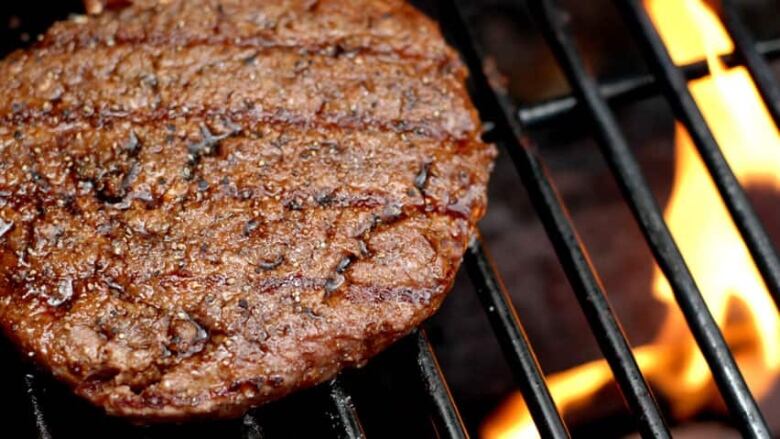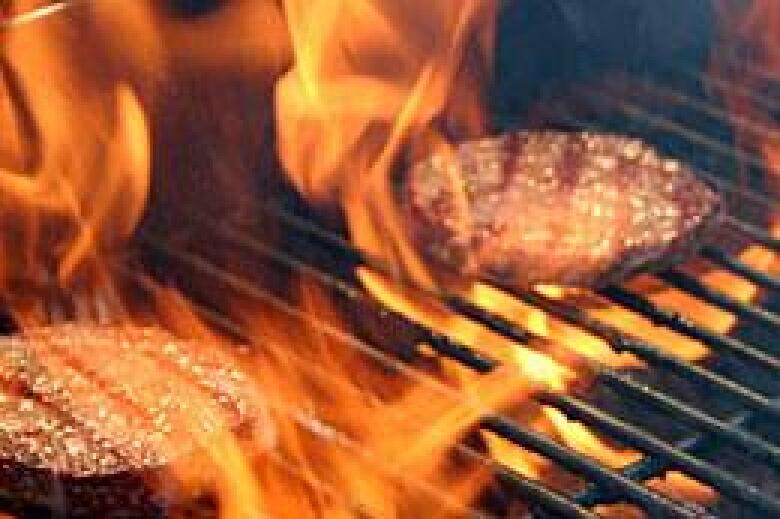7 tips to grilling the best burger: Andrew Coppolino

Summer is the season for grilling, and hamburgers are a popular backyard barbecuedish.
This summer barbecue classic needs to be simple and naked beef to be at its best. Here are some suggestions for making a beautiful burger.
Start with good beef
If you're using meat from the supermarket, find good quality ground beef that's right for your budget. Look for ground chuck don't use lean beef because a great burger needs the fat and the flavour: Those two qualities are closely related.
Note as well, that while grass-fed beef may be attractive and on-trend, it likely won't have the burger flavour you're looking for.
- Andrew Coppolino: Canada's food identity is regional, not national
- More food columns from Andrew Coppolino

Alternatively, if you visit a butcher regularly, ask about what kinds of meat blends you might be able to get to make a burger balanced with texture, flavour and fat content. Many restaurants that specialize in burgers will combine two or three beef cuts.
Some people like to add pork to the mix, butagain, these are beef burgers we're striving for and not meatballs for your pasta.
Don't get in a bind
It's generally not a good idea to pack burger meat with a load of bread crumbs. This dilutes flavour and can bloat the patty.
Some people like to add an egg as a binder, but it is not necessary for the cooking or the consistency.
Seasoning: right amount,right time
Salt boosts flavour and is absolutely necessary to help you become the burger maven of your neighbourhood; however, if introduced too early in mixing your patties and allowed to sit for a long time, salt starts to break down proteins and can result in a tough burger.
Season simply and liberally with salt and cook immediately. That's key advice from chef-restaurateur Nick Benninger of Marbles in Waterloo. He's clearly a burger minimalist.
"I take a nice fatty beef. If you can grind it yourself, get (your butcher) to put beef belly in there. It's super delicious. And then nothing mixed into the meat," Benniger said.
"I just put salt and pepper on the outside, and a heck of a lot of it, and then just grill it nice and hot. Don't over-cook them, just a nice medium."

Concave patty
Shape your patties from a ball of meat, depending on the size for the desired burger. The larger the meat ball is, thethicker and larger the patty will be when you flatten the ball.
But don't make them too thick: A common mistake is to create a giant thick patty. It's better to serve two thinner patties in the bun, if you want maximum burger bite for your buck.
Don't work the meat too much!Like pie dough, your burger meat needs a gentle massage and not a pounding.
Afteryou flatten the balls, add a little indentation or hollowin the centre to help them cook evenly. Arrange the patties on a sheet pan, letting them rest for 20 minutes in the freezer. Yes, the freezer!
This will help them keep their shape when you place them on the hot grill.

Be gentle, no poking
Get your barbecue quite hot and lubricate the grill with avegetable-oiled cloth held by tongs. Gently place the patties on the grill and step away from the barbecue.
Don't slap the patty around and press down on it, which only squeezes out juices and therefore, flavour.
Turn the burgers once and flip them once. Constant poking and prodding of a patty diminishes flavour in the meat, notes chef Alex Janke of Kitchener's Gilt Restaurant.
"Don't touch it," Janke said. "Do a quarter turn, flip it, another quarter turn and take it off and let it rest for two or three minutes. Add your cheese and toppings and away you go."
The total cooking time should be between 10 and 15 minutes, depending on patty thickness, of course. Like a steak, leaving the burger to rest allows for the juices to re-assemble. I leave a little bit of pink inside the burger, but health authorities strongly recommend that ground beef be cooked to an internal temperature of 160-degrees Fahrenheit (70 C).
Butteredbeef: the extreme burger
The other and extreme home-cook method to cook great burgers is to grind your own meat. Get out your food processor and have ready a pound or so of sirloin tips, or something labeled "steak tails."
Cut the beef into half-inch cubes and add a few tablespoons of butter that has also been dicedinto half-inch cubes. Yes, butter.
Next, freeze the butter and the beef before dumping it into the food processor. Carefully whiz the mixture until the cubes are chopped down tothe size of a pea. Season with salt and pepper, form into patties, place on a sheet pan and freeze for 20 minutes. Add more salt and grill.

About your buns
There is a battle about buns: Should they be classic "Wonder bread-style" or heftier versions that have an absorptive quality and can envelope the toppings? That is for you to decide, but remember: We're going for big burger flavour here, so a preponderance of bread (and a buffet table of 15 toppings) can suppress the taste of the meat you've tried hard to bring to the fore.
Do not, under any circumstances, use that upper warming rack in your barbecue unless you want a desiccated, propane-tinged and solid puck of gluten for your burger bun.
Use your side burner, or make space on your barbecue grill, for a hot cast-iron pan and a few tablespoons of butter: drop your buns into the melted butter and get them brown and very crispy.
Your burger patty and your barbecue guests will absolutely love you.












_(720p).jpg)


 OFFICIAL HD MUSIC VIDEO.jpg)
.jpg)



























































































